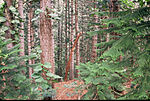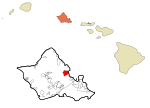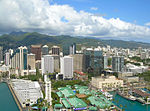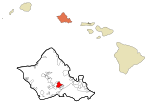Koʻolau Range
Cenozoic HawaiiExtinct volcanoes of the United StatesMountains of HawaiiNational Natural Landmarks in HawaiiNeogene Oceania ... and 5 more
Pleistocene OceaniaPleistocene shield volcanoesPliocene shield volcanoesPolygenetic shield volcanoesVolcanoes of Oahu
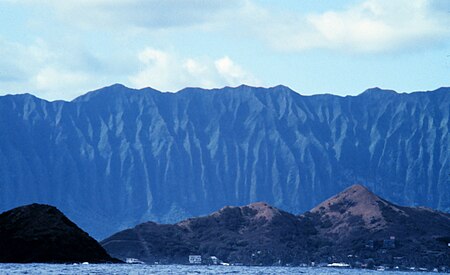
Koʻolau Range is a name given to the dormant fragmented remnant of the eastern or windward shield volcano of the Hawaiian island of Oʻahu. It was designated a National Natural Landmark in 1972.
Excerpt from the Wikipedia article Koʻolau Range (License: CC BY-SA 3.0, Authors, Images).Koʻolau Range
Manana Ridge Trail, Pearl City
Geographical coordinates (GPS) Address Nearby Places Show on map
Geographical coordinates (GPS)
| Latitude | Longitude |
|---|---|
| N 21.45 ° | E -157.9 ° |
Address
Manana Ridge Trail
Manana Ridge Trail
96701 Pearl City
Hawaii, United States
Open on Google Maps
